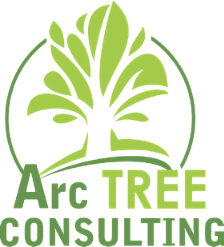Visual risk assessment of tree trunks often uncovers indications of internal decay and cavities. To help determine if the tree is still structurally sound, a look inside the trunk can be very helpful!
When one has a tree that is suspected of internal decay, the first question is often “Do I have to cut it down?” Not necessarily. Experienced, qualified, tree risk assessors can often make an informed qualitative assessment of failure likelihood even with manual “sounding” using a mallet. But using Sonic Tomography gives us an actual image of interpreted wood integrity from inside the tree, much like an ultrasound is used to examine people internally, and most importantly, non-destructively.
How does Sonic Tomography Work?
The PiCUS 3 Tomograph measures the velocity of sound waves in wood to detect decay and cavities in standing trees, non-invasively. The acoustic velocity depends on the modulus of elasticity and the density of the wood itself. Most damage and disease causes fractures, cavities, or rot and reduces the wood’s elasticity and density.
By using both acoustic travel-time information and geometry data of the tree’s trunk, the software calculates tomograms that show the varying velocities. The speed of sound in wood correlates with wood quality and is therefore a measure for the sound structural wood and residual wall thickness of the trunk being measured. Knowing this quality of sound wood can be very helpful in determining the trunk’s likelihood for breaking.
Which Trees are Good Candidates?
Typically these are veteran trees that offer significant benefits to the tree’s owner, and the surrounding community. Heritage trees, historical trees, memorial trees, or any other veteran tree that plays a significant role in the landscape where it is situated. Recurring, sonic tomography can become expensive when combined with the associated care that is typically recommended. However, the loss of the tree’s benefits and the potentially high cost of professional tree removal can often be more, especially in the short term. Arc Tree Consulting can help you determine the best course of action based on the costs of the alternate options associated with such a tree.
Mitigation and Re-Inspection Intervals
If the advanced assessment indicates that the tree is structurally sound, then it may often be retained while meeting a reasonable duty of care to your property and surrounding community. Mitigation efforts may include the application of therapeutic chemicals and systemic fungicides to increase systemic resistance to advancement of decay into the living sapwood. Pruning and supplemental support may also be recommended. Re-inspection intervals will be recommended based on the severity of wood loss, the potential aggressiveness of the rot, the location of the decay, and the severity of consequences of tree failure.

